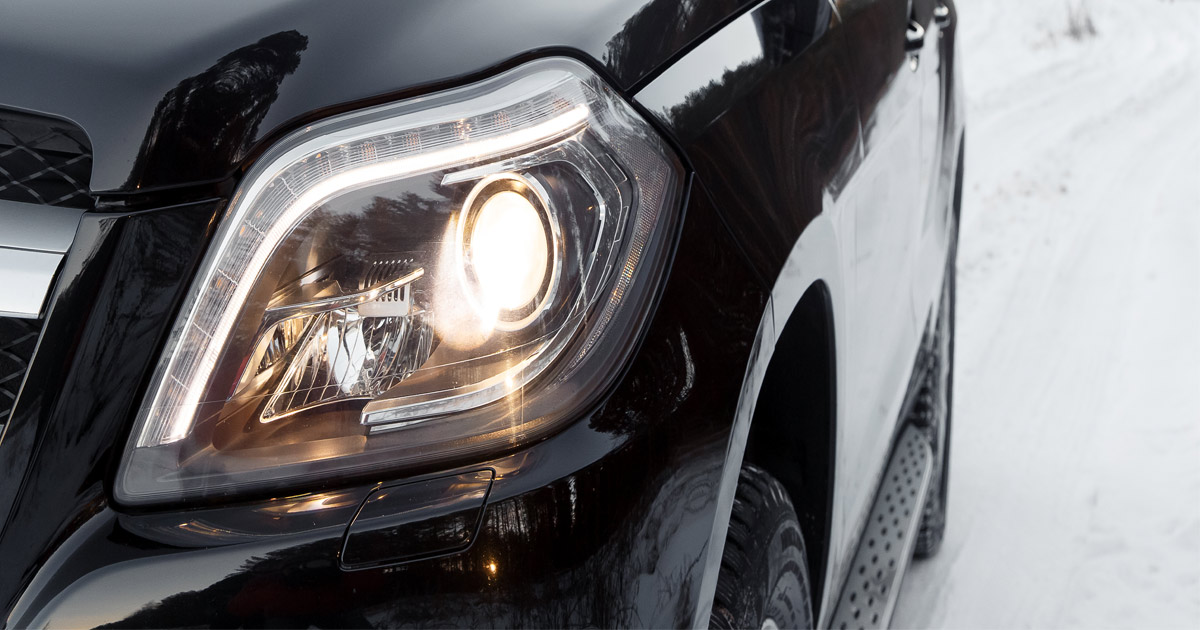Depth perception, color recognition, and peripheral vision are all reduced in the dark, according to the National Safety Council (NSC). Consequently, the risk of a fatal car accident is three times greater at night than during the day. The Insurance Institute for Highway Safety (IIHS) reports that nearly 50 percent of traffic fatalities in the United States occur when it is dark. It is imperative for drivers to be aware of the risks associated with nighttime driving and the importance of adhering to these headlight safety tips to avoid car accidents.
Why is Nighttime Driving More Dangerous?
In 2018, 36,560 people died in motor vehicle crashes, according to the National Highway Traffic Safety Administration (NHTSA). An IIHS analysis of over 40 years of data from the U.S. Department of Transportation (DOT) reveals that many of these crashes occurred at night; approximately one-third of all crash deaths in 2018 happened between 3:00 p.m. and 9:00 p.m. There are several reasons why driving at night involves more risk than driving during daylight hours, including the following:
Visibility is Reduced
Unlike deer, owls, and other animals with excellent nighttime vision, humans cannot see well in the dark. Rural roads can be particularly dangerous for drivers at night. According to the NHTSA Deputy Administrator, there are a disproportionate number of traffic fatalities in rural areas. They accounted for 45 percent of all traffic fatalities in 2018, even though only an estimated 19 percent of Americans live in rural areas, and only 30 percent of vehicle miles traveled were in rural areas.
Poorly lit or damaged roads, minimal law enforcement presence, the absence of signs, and lack of places to pull over are some common causes of car accidents on rural roads. When combined with nighttime conditions, these accidents can be catastrophic, especially if drivers are traveling at high speeds.
Drivers are More Likely to be Fatigued
There were 91,000 motor vehicle crashes involving drowsy driving in 2017, according to the NHTSA. Those car accidents claimed the lives of 795 people. While it is difficult to determine the percentage of motor vehicle crashes that involve drowsy driving, an American Automobile Association (AAA) Foundation for Safety study indicates that the scope of the problem is greater than initially purported by the U.S. government. According to the data analyzed in the study, drowsiness was identified in 8.8 to 9.5 percent of all crashes and 10.6 to 10.8 percent of those that resulted in significant property damage, airbag deployment, or injuries.
Drivers are more likely to be fatigued at night. Some people are at increased risk for drowsy driving, such as commercial drivers, shift workers, drivers with untreated sleep disorders, and motorists who use sleep-inducing medications. The AAA research brief explains that crashes that occur in darkness are more than three times likely to involve drowsiness, 48 percent of crashes examined in the study occurred in darkness.
More Drunk Drivers are on the Road
The NHTSA reports that each day, approximately 30 people in the U.S. die in drunk driving crashes. There were 10,511 deaths from drunk driving in 2018, which accounted for 29 percent of all motor vehicle traffic fatalities that year. Marijuana and other drugs, both legal and illegal, are also common causes of impaired driving accidents.
According to the NSC, impaired drivers are most frequently on the road after dark. The 2017 NHTSA Traffic Safety Facts reveals that 17 percent of all fatal single-vehicle crashes occurred during the day whereas 42 percent occurred at night. Also, six percent of fatal multi-vehicle accidents occurred during daylight hours compared to 22 percent at nighttime. On weekends during the daytime, 952 people were involved in fatal crashes, whereas 4,566 people were involved in fatal crashes at night. Intoxication was a contributing factor in many of these accidents, particularly between the hours of midnight and 3:00 a.m. on the weekends.
Traffic Congestion
Roads tend to be more crowded during rush hour, which is between 4:00 p.m. and 7:00 p.m. on weekdays. Crowded conditions, coupled with impatient drivers eager to return home from work, presents a dangerous situation for everyone on the road. Rear-end accidents, sideswipes, and multi-vehicle collisions are common accidents that occur at rush hour.
During this time, drivers can become impatient and speed or tailgate. They may also be distracted as they attempt to eat, talk on the phone, search for objects in their car, or change the radio station while driving. Cellphones, vehicle controls, and car technology, including infotainment systems, are just some of the ways in which drivers’ attention can be diverted from the road. Especially when driving at night, these distractions can be deadly; distracted driving killed 2,841 people and injured 400,000 in 2018, according to the NHTSA.
Headlight Safety Tips
Headlights are crucial for those driving at night, but they must be used and maintained properly in order to work. Improperly functioning or dim headlights increase drivers’ risks for accidents. The IIHS introduced headlight ratings in 2016 to encourage manufacturers to install better vehicle lighting, prompting many to improve the quality of their headlights. In addition to driving a car equipped with good quality headlights, there are also some ways drivers can protect themselves and avoid nighttime car accidents.
Ensure headlights are working. Before heading out, drivers should make sure their headlights and taillights are working. Reviewing the owner’s manual can help a driver ensure that their lights are functioning correctly. Driving with burnt out or dim lights can increase a driver’s risk of an accident. All non-working bulbs should be replaced immediately.
Keep the lights clean. Dirty heights can make it even harder to see at night. Drivers should clean their headlights regularly and replace them when it is necessary.
Properly aim the headlights. Improperly aimed headlights can blind other drivers and fail to illuminate the road. Headlights should point straight ahead and be approximately the same height both vertically and horizontally.
Use high beams correctly. The NSC recommends using normal headlights at night and high beams only in certain conditions, such as when they are needed to illuminate wider and longer stretches of road. However, they should not be used in poor weather conditions, such as rain, fog, and snow. Regular headlights and fog lights are safer options.
Dim the dashboard. Some cars dim the dashboard automatically when the headlights are turned on, but others do not. Drivers should make sure that their dashboard lights are dimmed at nighttime to reduce reflections on the windshield and improve visibility.
Do not look directly at oncoming headlights. Drivers can avoid the glare of oncoming headlights by not looking directly at them. Rather, looking slightly down and to the side can help drivers to see the lines on the road and stay in their lane.
Reduce windshield glare. Dirty windows or mirrors can create glare, making it difficult for drivers to see, especially at night. This glare can be reduced by keeping the windshield and all mirrors clean and in good repair.
Virginia Beach Car Accident Lawyers Advocate for Safe Headlight Use
If you were injured in a car accident at night, contact a Virginia Beach car accident lawyer today. At East Coast Trial Lawyers, our experienced legal team will review your case to determine the cause of your accident and whether you are entitled to compensation. For a free consultation, contact us online or call us at 757-352-2237. Located in Virginia Beach, Virginia, we serve clients throughout Chesapeake, Eastern Shore, Hampton, Newport News, Norfolk, Portsmouth, and Suffolk, Virginia, as well as North Carolina and nationwide.


